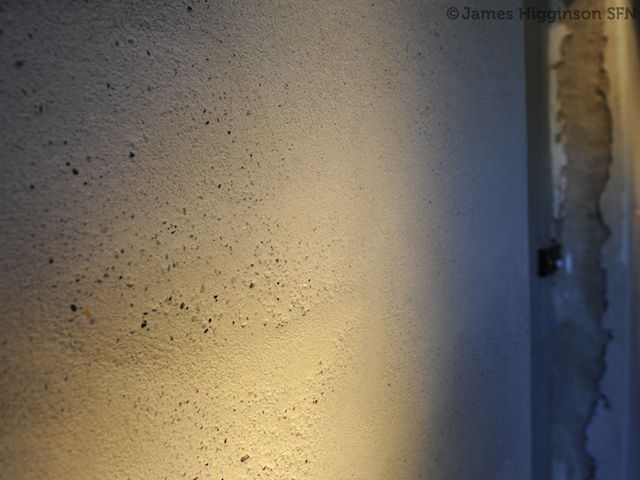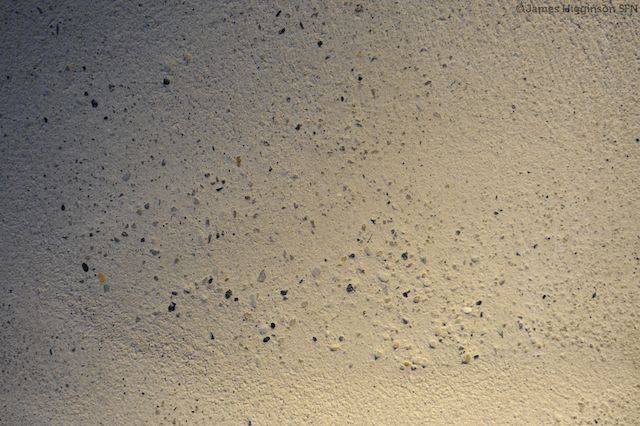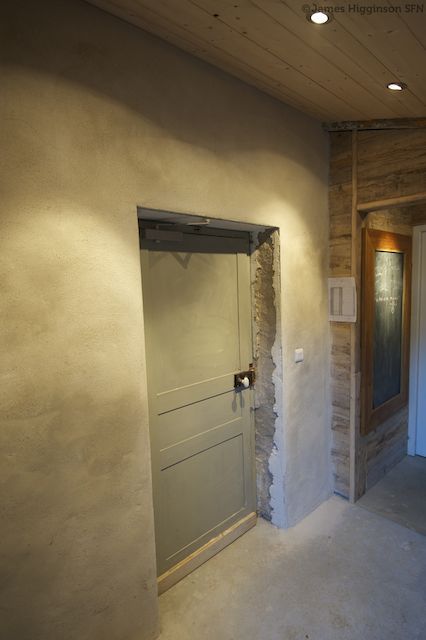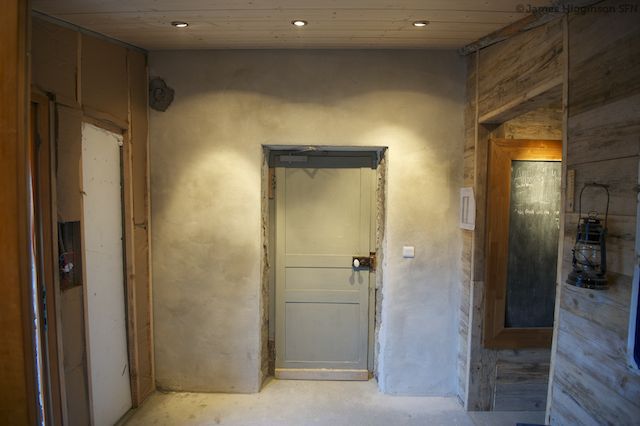
Lime rendering on a small scale like this is quite an easily manageable DIY task. It's also pretty cheap to do and environmentally friendly as we won't be using any cement.
First job is to remove the old render or whatever you have covering the wall. In this case using only a hand pick I was able to remove the sandy crumbling render very easily in about an hour. If you have a tougher surface, you might need a breaker or marteau piqueur
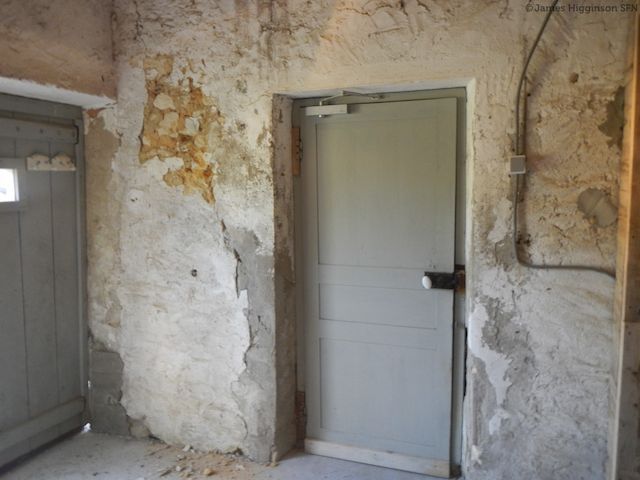
Chase out any runs for conduits and pin them securely in place, you dont want them popping out when you're throwing your render at it later.
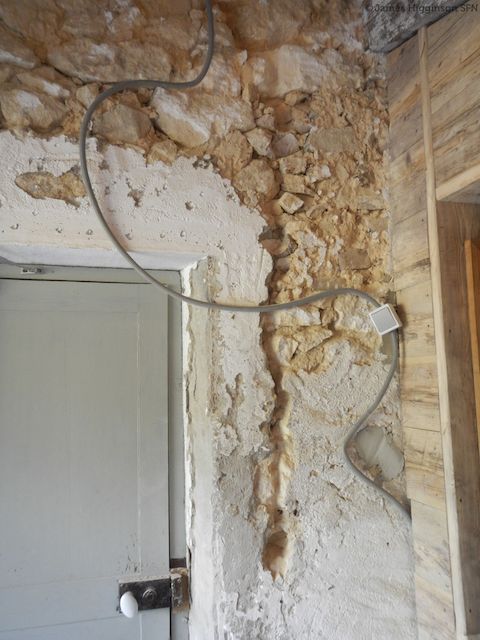
The wall is prepared and swept, I've also thoroughly wet it, I will do this throughout the process as it will help the mortar to adhere and stop it drying too fast which will cause it to crack.
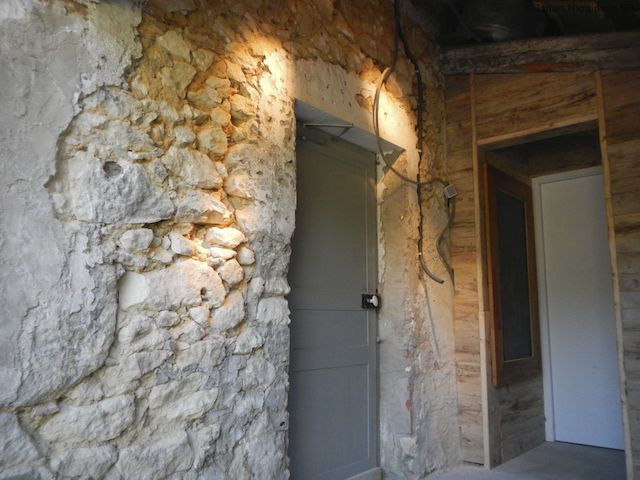
The mix I'm using is 1 part White Hydraulic Lime Chaux Hydraulique Blanche to three parts sharp sand Sable à bâtir. The mixing instruction are on the bag, you can use a concrete mixer or a drill attachment. You can see it's not too fluid. If it's too wet it's going to drop off the wall, too dry and it won't stick at all.
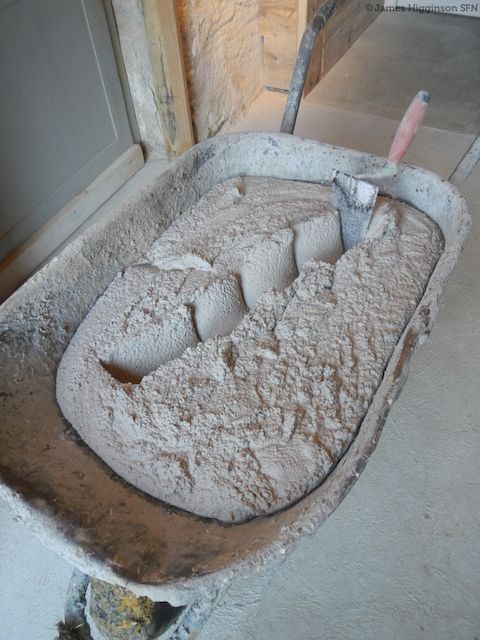
Using a flicking action apply small amounts of the mortar with a trowel, the effect of throwing the mix like this expels and air and improves adhesion. The first time I ever did this, I simply threw it at the wall using my hands. You'll need to wear gloves and eye protection for this, the lime is corrosive.
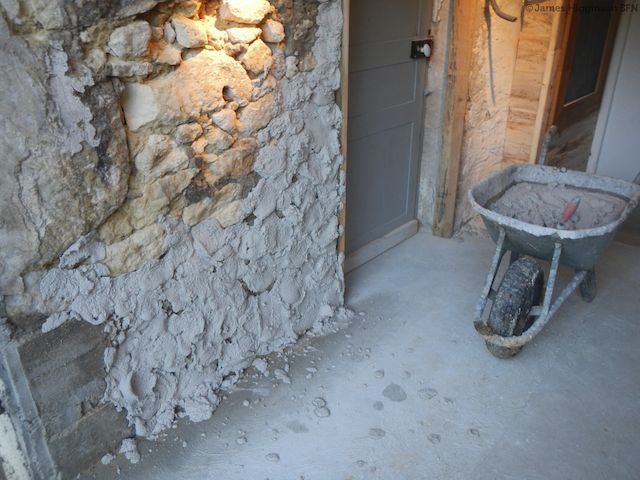
As there is no cement involved the mortar remains maleable for quite some time, especially if you cover it with a sheet of plastic. Using the back of your trowel, smooth everything out as flat as you can get it. Begin this process after about half an hour; too soon and it will drop off. Don't worry about making it perfectly flat, your second coat will do that.
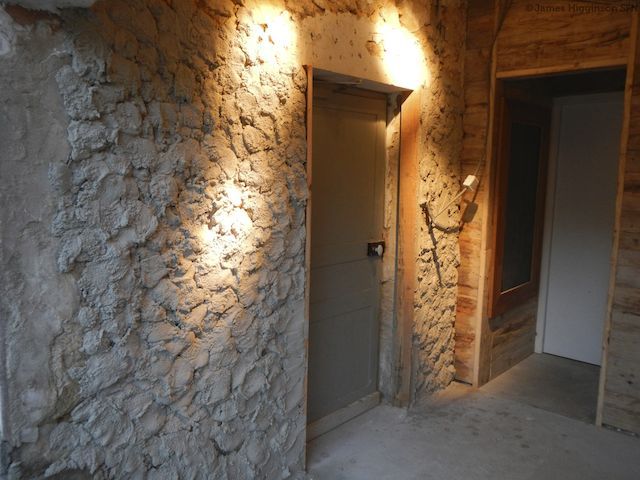
Use these beads to strengthen corners and make it easier to achieve your smooth final finish. You can stick them on in advance with some contact adhesive or even silicon, the render will hold them fast eventually.
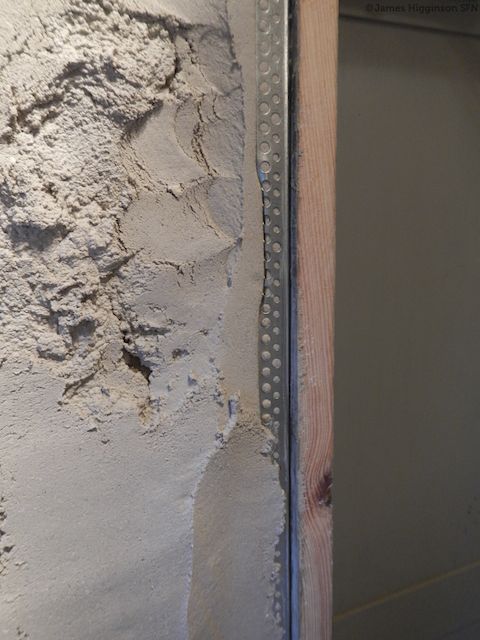
Once it's as flat as you can get it, score the soft render in a crosshatch fashion; this is going to help the next coat to adhere. This is called a scratchcoat.
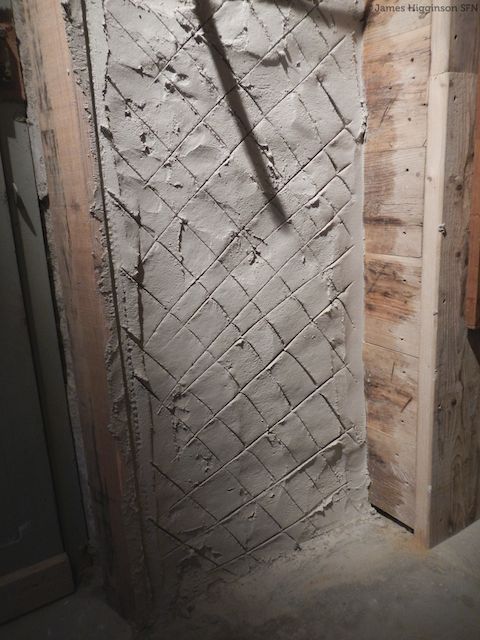
You can get a flatter finish using a Taloche à pointes - you can't do this until a few hours later.
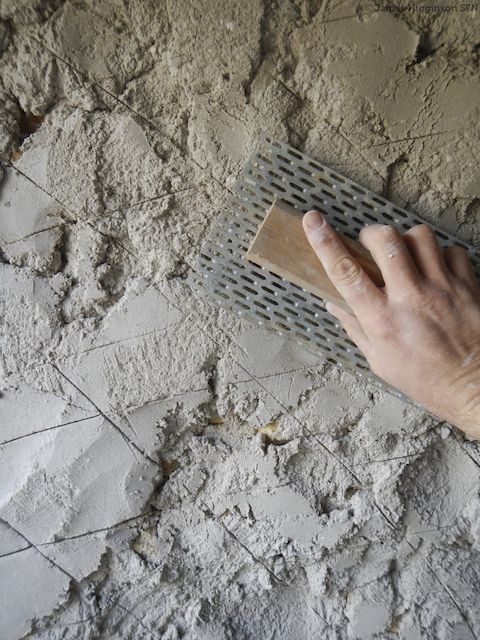
The following day, apply a second coat; you won't need anything like as much mortar.
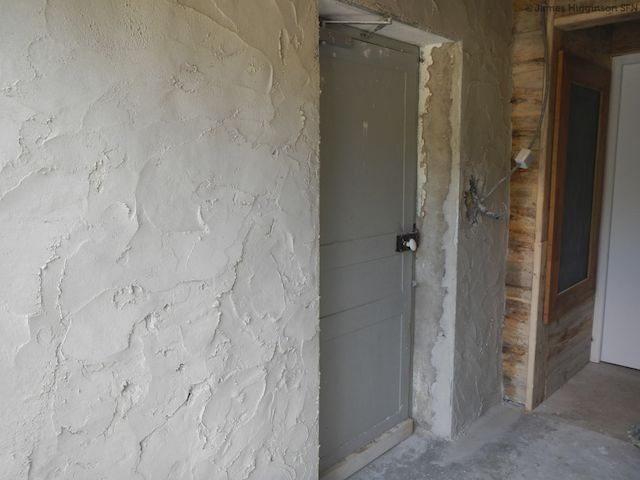
Finish it off with a trowel and taloche again.
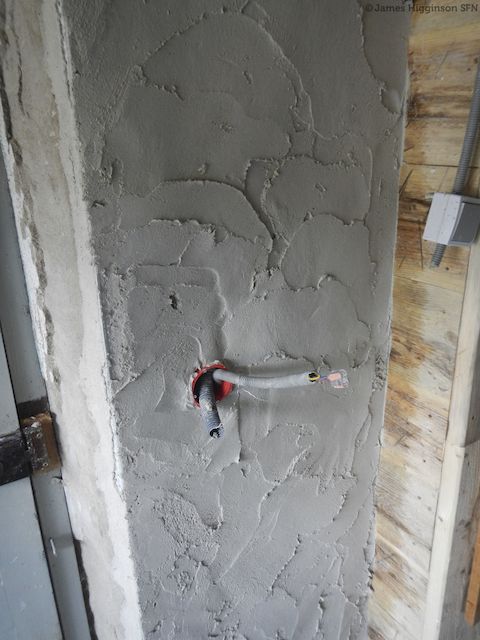
Sctratch it ready for the final finish.
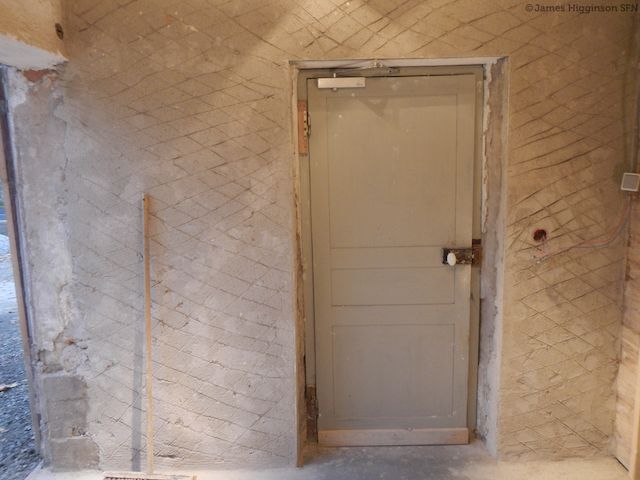
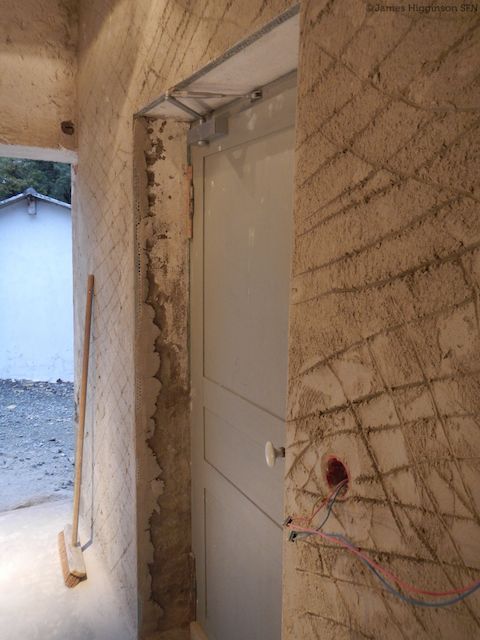
Top tip: Add PVA (Wood glue) to the final coat to seal the render and stop it being permanently dusty.
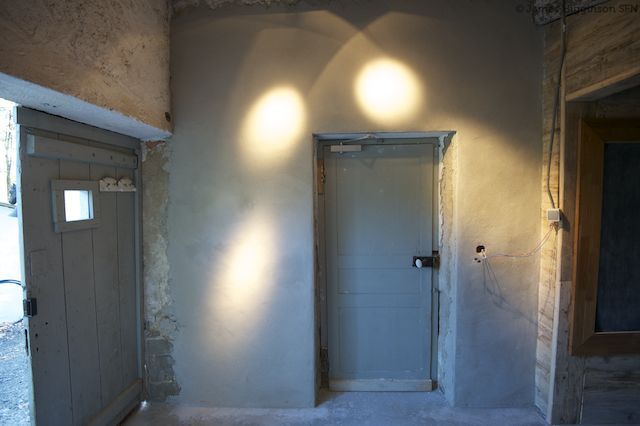
You can finish with the Taloche à pointes if you like, you'll get a very typical 'Aquitaine' style finish. I prefer this outside though as it's quite rough. In this case I have used a damp sponge, this creates a nice tactile finish as it exposes and cleans the tiny aggregates in the sand. These two finishing methods are also quite easy to achieve. Trowel flat finish will take some practice.
Cost of materials used, 1 bag of Lime (€12) and 110 kg sand (€3) 500ml PVA (€1.50)
Total cost €16.50, total time to do the job was about 8 hours over three days.
What do you think, would you have a go at this?
